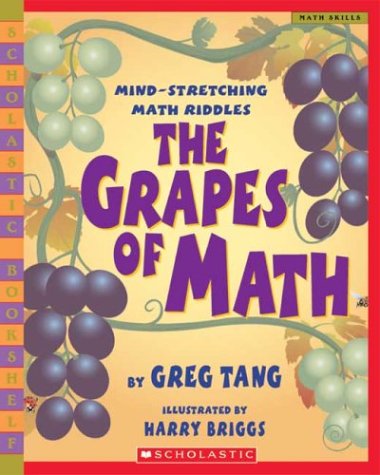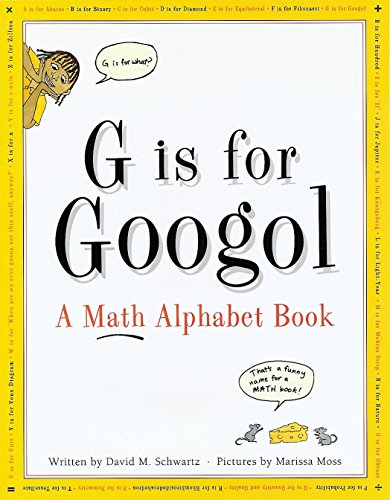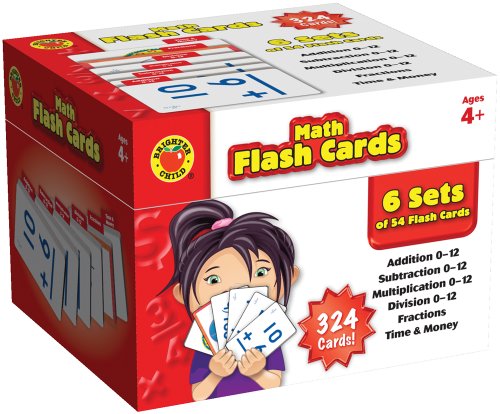On this page: Curricula | Supplements | Manipulatives | Teaching Tips
math pages
math curricula
📚 Singapore Math. This well-designed, well-laid out K-8 math program is the choice of many homeschoolers. Singapore is a great option for those looking to give their child a strong conceptual foundation in mathematics. There is plenty of support built into the program–including a Home-Instructor’s Guide—but Singapore does rely on a parent to provide daily instruction. Very highly recommended. – Elementary • Middle
Tip: If you search for "Singapore Math" online or in your local bookstore, you will find many workbooks that go by this title. However, to get the 'real' Singapore Math curriculum, you need to shop through the company's website: singaporemath.com.
📚 Art of Problem Solving (AoPS) & Beast Academy. This challenging curriculum is the best option for math-lovers who really enjoy a good mental workout. The primary math series, Beast Academy, covers grades 2-5. The Art of Problem Solving series picks up in grade 6 with "Volume 1: the Basics" and "Volume 2: and Beyond." From there, proceed to Prealgebra, Algebra, Geometry, Precalculus, Calculus, and beyond. Check out the website for many more outstanding resources, including online class offerings. – All
📚 Math-U-See. Developed by a homeschooling father, Math-U-See has caught on with homeschoolers due to some unique features, including video lessons and a mastery-based approach that allows students to advance at their own pace. A detailed instructor guide with sample problems and explanations for each lesson is also provided. Once a lesson is taught, the student spends the next several days completing practice sheets to reinforce the new learning; these sheets include cumulative review to ensure that previous concepts are not forgotten. The program makes extensive use of manipulatives to meet its goal of teaching the “why” of math, not just the “how.” Your child can follow this curriculum directly from kindergarten through calculus. – All
📚 Math Mammoth. For homeschoolers looking for a complete math curriculum at an excellent price, Math Mammoth may be a good solution. Math Mammoth is available for grades 1-7 and can be purchased on CDs, as downloadable files, or as printed books. Described by the manufacturer as “self-teaching, or nearly so,” each level consists of two student worktexts, which contain full explanations for each concept, written directly to the student. Free videos, matched to the curriculum, are also available on the manufacturer’s website. Digital files can be printed as many times as needed, making this curriculum a great value for families with multiple children. – Elementary • Middle
📚 Saxon Math. Saxon is the curriculum of choice for those who prefer a very traditional, incremental mathematics program. From the distributor: “Saxon Math has consistently been one of homeschoolers’ top choices when it comes to math curriculum. Their incremental spiral-approach teaches students information in small amounts, and continually repeats concepts to keep newly acquired skills fresh and active.” The Saxon curriculum spans first grade through calculus. – All
supplements
📖 Primary Grade Challenge Math and other books in the Challenge Math series by Edward Zaccaro. Zaccaro writes that “Math is often taught as all scales and no music. This book contains the music!”—and he delivers. Each short chapter introduces a mathematical concept with limited text and plenty of illustrations, then provides a series of problems meant to further solidify understanding of the concept. The problems are fun, thought-provoking, and of varying difficulty (from Level 1 to Genius). In the elementary years, this terrific series can almost be used as a curriculum, although you will want to use additional resources to help your child nail down the fundamentals. Titles in the series include (in order of difficulty): Primary Grade Challenge Math, Upper Elementary Challenge Math, Challenge Math for the Elementary and Middle School Student, and Real World Algebra. Highly recommended. – Elementary • Middle
📖 Family Math for Young Children and Family Math by Jean Kerr Stenmark and others. “Using easy instructions and simple objects such as beans, blocks, pennies, buttons, and string, parents and kids solve problems together. Family Math is a rich resource of math curriculum including number and estimation, logical thinking, probability and statistics, geometry, measurement, and calculators. The stimulating games, puzzles, and projects entice kids in playful ways to master math concepts.” These activity-based books are especially valuable for parents of young children. – Preschool • Elementary
📖 The Grapes of Math and other math riddle books by Greg Tang. Tang’s goal in these books is to help children develop mathematical problem solving skills by learning to identify patterns and think flexibly. The format is simple: each two-page spread has a picture and a riddle that can be solved using simple arithmetic. The answers at the back of the book explain how patterns can be used to quickly arrive at the answer. Other books in the series include Math for All Seasons, Math Potatoes, Math-terpieces, and Math Appeal. – Elementary
📖 The Adventures of Penrose the Mathematical Cat by Theoni Pappas. “Penrose, a cat with a knack for math, takes children on an adventurous tour of mathematical concepts from fractals to infinity.” Also see Further Adventures of Penrose the Mathematical Cat and Fractals, Googols, and Other Mathematical Tales. Engagingly written short chapters cover a range of fascinating topics in mathematics; the books can be read cover-to-cover or used to periodically supplement math studies. – Elementary • Middle
📖 G is for Googol: A Math Alphabet Book by David M. Schwartz. Though it meanders from topic to topic—with short entries on everything from cubits to Fibonacci to Möbius strips—G is for Googol is engagingly written and imparts mathematical information in a fun, low-stress manner. – Elementary
📖 How Many Guinea Pigs Can Fit on a Plane? Answers to Your Most Clever Math Questions by Laura Overdeck. In this entertaining book, the creator of the popular Bedtime Math series tackles a bunch of off-the-wall questions posed by real kids: “How many bees does it take to make one jar of honey?” “How many spiders are there in the whole world?” Use this book to highlight the power (and fun) of using estimation and mathematical thinking to address real-world questions. – Elementary • Middle
📖 Math Curse by Jon Scieszka and Lane Smith. Our protagonist wakes up one morning to find that everything in her life has become a math problem. This very clever picture book from Scieszka and Smith will make a welcome addition to the math shelves of your home library. – Elementary
✏️ Khan Academy. Khan Academy offers a wealth of free math educational resources, including a large library of instructional videos and online practice problem sets for learners of every level. The math modules can be browsed either by topic or by grade. See the individual subject pages of this website for topic-specific recommendations.– All
✏️ CK-12. CK-12 offers free, adaptive online practice across all areas of math. Specific recommendations may be found on the individual subject pages of this website. – Elementary
manipulatives
🖐️ Animal Counters. Dedicated counters are fun but not mandatory. Use these assorted animal counters—or legos, or blocks, or toy cars, if you'd prefer—as a tool to practice counting, sorting, adding, and subtracting. – Preschool • Elementary
🖐️ Number Line. There are many number lines available on Amazon; the linked image is for a 32' wall-hangable poster that includes negative as well as positive numbers (–20 to 100). Another fun option for an active child is a floor mat; kids can jump along this number line to practice adding and subtracting numbers up to 30. – All
🖐️ Hundred Chart. A hundreds chart can be useful for counting, addition, subtraction, multiplication, identifying prime numbers, and more. Buy a pack of 10 laminated charts through Amazon or download and print some for free here. – Elementary
🖐️ Place Value Disks. A set of place value disks is a very useful manipulative to have on hand as you're studying more advanced arithmetic concepts, such as long division and multi-digit multiplication. This version consists of 280 multicolored disks representing place values from 1 to 1,000,000. – Elementary
🖐️ Base Ten Block Set. The base ten set is an essential arithmetic manipulative. Use it as a tool in teaching place value, addition with carrying, subtraction with borrowing, and more. There are many options available online (wooden, connecting, jumbo sized); the linked image is for a blue plastic set sold with an instructional booklet by Learning Resources. Another popular manipulative along these lines is a set of Cuisenaire rods, which come in a variety of lengths (1–10 units) and can help kids visualize simple arithmetic operations." – All
🖐️ Flash Cards. When it comes time to memorize those arithmetic facts, your pack of flash cards will become a must-have supplement. The linked image is for a handy deluxe pack, containing the fact cards for addition, subtraction, multiplication, and division (0 to 12) as well as fractions, time and money. You can also make do with a pack of index cards and a marker. – Elementary
🖐️ Fraction Tower Set. This set of equivalency cubes, sold by Learning Resources, can be helpful in visualizing the relationship between fractions, decimals and percents. Fraction discs are another useful hands-on resource for a study of fractions. – All
teaching tips
Wondering what to teach when? Download the Math Sequence to browse an Elementary and Middle School Scope & Sequence. Note that, if you use a math curriculum, you will likely find its Scope & Sequence to be somewhat different from the sequence outlined here. However, you can expect that most (if not all) of the material listed in the Sequence will be covered at some point during the Elementary & Middle School years. Go to Math Sequence →
You don’t need a curriculum to teach math, but most homeschoolers prefer to use one. Math is one of those subjects that is particularly amenable to a curriculum-based study. There are several reasons for this. First, unlike many subjects, math instruction proceeds through a clear progression of skills (for example, a child progresses from counting to understanding place value to addition to multiplication). Moreover, a strong curriculum will incorporate well-understood ‘best practices’ for introducing mathematical concepts. Finally, the study of math requires plenty of hands-on practice that a curriculum can conveniently supply. Check out the Curricula recommendations to find a program that will work for your family.
If you use a curriculum, adapt it to the needs of your child. Even if you choose the perfect curriculum, there will come a point at which the program does not quite align with your child’s needs. For example, perhaps your child has rapidly mastered her multiplication facts and is ready to move on to fractions; the curriculum says you should spend another two weeks on multiplication tables. Follow your child’s lead and move on! On the other hand, maybe your child is really struggling with a concept. At this point, you may opt to slow down, scope out the resources on the relevant topic page, and try to help your child understand the material in a new way. Or you may even temporarily drop this challenging topic, with the knowledge that most curricula spiral back to the same topics year after year.
Your child will forget some math skills after not using them for a while, and that’s okay. The nice thing about math is that there is a lot of built-in repetition from year to year. A first grader learns the math facts within 20, a second grader learns to add numbers to 1000, and a third grader can add numbers to 10,000. Because one year of math typically covers many topics—from money to measurement to arithmetic to geometry—kids will often go months without practicing a previously learned skill. It’s perfectly natural, then, that they will need a little time to remember these old skills when they are reintroduced. Consult the topic pages to find books, videos, and practice opportunities that will help you refresh your child’s memory before introducing a new unit.
Regardless of whether you use a curriculum, the resources on these pages can help you provide a rich and enjoyable math education. On the Math topic pages, you will find many terrific resource recommendations, including handy manipulatives to help kids visualize concepts, great picture books to help you introduce new topics, lots of extra practice (both online and workbooks), short videos, online simulations, and valuable teaching tips.


































